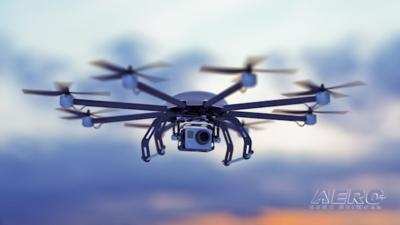Wed, Oct 26, 2016
Eighty-One Authorizations Approved To Date
The FAA began issuing Part 107 waivers and airspace authorizations to drone operators starting August 29, 2016, the effective date of the new rule. As of October 24, 2016, the agency has approved 81 authorizations for flights in Class D and E airspace, and has issued 36 waivers of Part 107 provisions to drone operators who applied after the rule’s effective date.

However, the agency has found that many applications have incorrect or incomplete information. Many applicants request too many waivers or request waivers for flights in types of airspace for which the FAA is not yet granting approvals. As a result, the agency has had to reject 71 waiver requests and 854 airspace applications.
It’s important for applicants to understand the information needed to make a successful safety case for granting a waiver.
For example, we clearly spell out the information required for a waiver to fly at night – one of the most common requests:
Applicant must provide a method for the remote pilot to maintain visual line of sight during darkness.
Applicant must provide a method for the remote pilot to see and avoid other aircraft, people on the ground, and ground-based structures and obstacles during darkness.
Applicant must provide a method by which the remote pilot will be able to continuously know and determine the position, altitude, attitude, and movement of their small unmanned aircraft (sUA).
Applicant must assure all required persons participating in the sUA operation have knowledge to recognize and overcome visual illusions caused by darkness, and understand physiological conditions which may degrade night vision.
Applicant must provide a method to increase conspicuity of the sUA to be seen at a distance of 3 statute miles unless a system is in place that can avoid all non-participating aircraft.
The other performance-based standards also list exactly what the FAA needs to consider a waiver.
Without a detailed description of how the applicant intends to meet these standards, the FAA can’t determine if a waiver is possible. Operators should select only the Part 107 regulations that need to be waived for the proposed operation. Applicants also should respond promptly to any request we make for additional information. If the agency does not receive a response after 30 days, it will withdraw the request. Operators must apply for airspace authorizations on the same web page.
(Source: FAA news release)
More News
From 2016 (YouTube Edition): The Canadian Forces Snowbirds Can Best Be Described As ‘Elegant’… EAA AirVenture 2016 was a great show and, in no small part, it was>[...]
Airplane Lunged Forward When It Was Stuck From Behind By A Tug That Was Towing An Unoccupied Airliner Analysis: At the conclusion of the air taxi flight, the flight crew were taxii>[...]
Aero Linx: International Stinson Club So you want to buy a Stinson. Well the Stinson is a GREAT value aircraft. The goal of the International Stinson Club is to preserve informatio>[...]
Request Full Route Clearance Used by pilots to request that the entire route of flight be read verbatim in an ATC clearance. Such request should be made to preclude receiving an AT>[...]
"Today's battlefield is adapting rapidly. By teaching our soldiers to understand how drones work and are built, we are giving them the skills to think creatively and apply emerging>[...]
 Classic Aero-TV: Pure Aerial Precision - The Snowbirds at AirVenture 2016
Classic Aero-TV: Pure Aerial Precision - The Snowbirds at AirVenture 2016 NTSB Final Report: Costruzioni Aeronautiche Tecna P2012 Traveller
NTSB Final Report: Costruzioni Aeronautiche Tecna P2012 Traveller ANN's Daily Aero-Linx (11.23.25)
ANN's Daily Aero-Linx (11.23.25) ANN's Daily Aero-Term (11.23.25): Request Full Route Clearance
ANN's Daily Aero-Term (11.23.25): Request Full Route Clearance Aero-News: Quote of the Day (11.23.25)
Aero-News: Quote of the Day (11.23.25)



